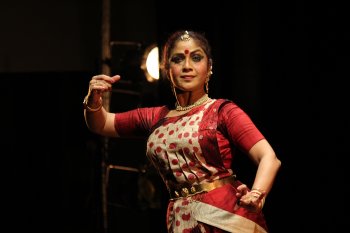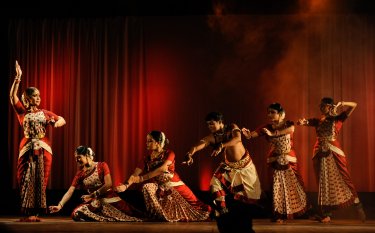 |
|
 |
|
Kavyanjali - An Ode to Gurudev - Sulagna Mukhopadhyay e-mail: sulagna64@gmail.com October 3, 2013 When writer Jeet Thayil in an interview discusses about Tagore and makes drastic comments like “.... wasn't an extraordinary poet, painter or a musician. He is overrated,” it shocks the Kolkata readers. This emotional injury is embalmed when we come to know about Telugu poets, who venerated, adored, emulated, owned and imitated Tagore freely. Tagore’s Gitanjali was translated into Telugu as early as 1914. Almost all works of Tagore were translated into Telugu, and have further spawned a rich literary legacy. Literary pilgrimages were undertaken to Santiniketan and some even stayed back and pursued their education under Tagore. Telugu poets were mesmerized by Tagore’s language of internationalism and universal religion. He was Viswakavi (poet of the world). Tagore’s influence on the romantic poets of modern Telugu literature was significant. The sway and effect that Tagore’s writings had on Telugu writers was seen in the evolution of a movement called Bhavakavitvam or the poetry of expression. The new movement of Bhavakavitvam gained strength around the 1920-30s when the influence of Tagore was dominant. The distinctive feature of Bhavakavitvam was that Bhava Kavis cared for bhava or emotion. This poetry was ganayogyam – fit to be sung, atmanayakam – subjective, vyanga pradhanam – suggestive, ekabhavashrayam – dependent on one central emotion, and laghu rachana – short composition. Intense subjectivity, love for nature, assertion of individuality, and an interest in the common man typifies Bhavakavitvam, as distinct and different from traditional classical poetry on one hand and reformist, socialist poetry on the other. This era in Telugu poetry, appealed to the taste and sensibilities of a young English educated generation. This new poetry reached its zenith with luminaries such as Gurazada Appa Rao, Rayaprolu Subba Rao, Devulapalli Krishna Shastry, Vedula Satyanarayana Shastry, Abburi Ramakrishna Rao, Bezwada Gopala Reddy, Duvvuri Rami Reddy, Mallavarapu Visweswara Rao, Chalam, Venkata Parvateeswara Kavulu, the poet duo of Balantrapu Venkata Rao and Oleti Parvateesam, and others, who were at the forefront of the romantic movement or Bhavakavitvam in Telugu literature. They drew immense inspiration from Tagore, were deeply influenced by his works, and created a rich and great literary legacy.  Photo: Trinadh Rakesh  Photo: G Murali A dance theatre production by Shankarananda Kalakshetra, Kavyanjali - An ode to Gurudev, chronicled and traced the extraordinary and far reaching impact of Rabindranath Tagore on Telugu writers and their poetry. It juxtaposed an anthology of Tagore’s poetry with a selection of similar, comparable Telugu poetry by Devullapalli Krishna Sastry, Rayaprolu Subba Rao and the poet duo of Balantrapu Venkata Rao and Oleti Parvateesam, showcasing a synergy of themes, thoughts and ideas in Telugu poetry of the early 20th century inspired by Tagore. Structured in 4 sections – Nataraja, Prakriti, Maataram and Gitanjali - Kaavyanjali was an offering to the poet through his poems paired with the Telugu ones, Rabindra Sangeet and Carnatic music, classical dance forms like Kuchipudi and Bharatanatyam and English narration. The songs chosen showcased Tagore’s oeuvre of describing the cosmic energy, the motherland, and nature. The song “momo chitte nriti nritte” was aptly expressed by the dancer choreographer Ananda Shankar Jayant. Using geometrical shapes, Jayant visualised the relationship between life and death as envisioned by Tagore. The six member troupe has well groomed dancers. Through her presentation Jayant has created a new idiom for Tagore’s dances. Sulagna Mukhopadhyay was trained in Bharatanatyam by Guru Thankamani Kutty and Indian folk by Late Botu Pal. She has an M.A. in Comparative Literature and has freelanced for various leading newspapers of Kolkata like The Telegraph, The Statesman and Ananda Bazar Patrika. She has written articles on dance and gender issues. She is a teacher of South Point School since 1996. |